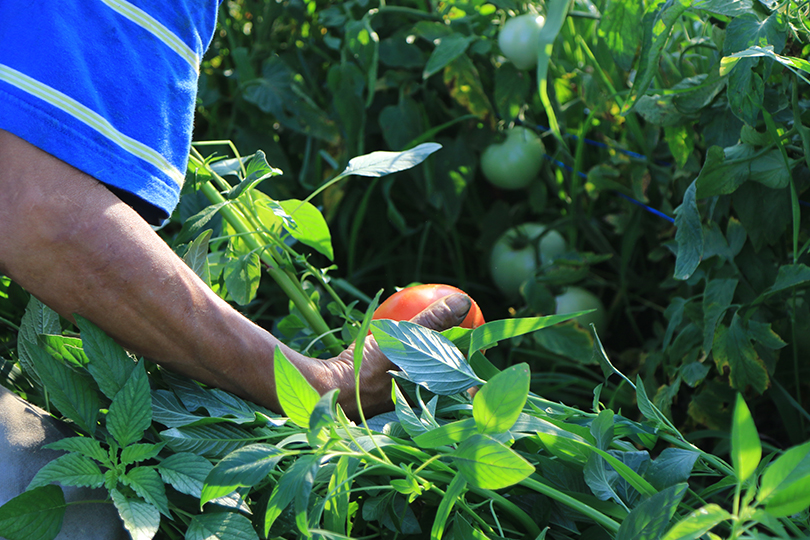By Jennifer Dorsett
Field Editor
The U.S. Department of Labor (DOL) issued a final rule updating the methodology for determining the annual Adverse Effect Wage Rates (AEWRs) for the H-2A visa program.
The H-2A program allows farmers, ranchers and other agribusinesses the flexibility to hire foreign workers for seasonal or temporary agricultural labor or services.
Under H-2A, an AEWR is the minimum wage rate that immigrant agricultural workers’ wages cannot be negotiated below. DOL uses AEWRs to certify the employment of foreign laborers does not adversely affect U.S. workers with similar jobs.
According to a statement released by the agency, the new rule improves consistency of AEWRs, provides stronger worker protections and establishes better stability for employers complying with these wage obligations.
In the past, H-2A rates were set according to the U.S. Department of Agriculture (USDA) Farm Labor Survey.
Now, the new final rule says DOL will use the Bureau of Labor Statistics’ (BLS) Employment Cost Index to determine wages and salaries for the preceding 12-month period.
Proponents of the change say the way the AEWR was calculated could cause wild fluctuations in the minimum wage rate, making it difficult for farmers and ranchers to plan and budget for seasonal labor expenses. Others applauding the new final rule said it will help ensure H-2A wages keep pace with wage increases in the overall economy.
“Texas Farm Bureau (TFB) appreciates the administration’s work in fixing the flawed Adverse Effect Wage Rate. Texas farmers and ranchers are dedicated to providing their employees a fair wage rate but continue to struggle under inadequate H-2A rules,” Laramie Adams, TFB National Legislative Director, said. “The new rule is a step in the right direction. However, comprehensive and flexible agricultural guest worker reform is still critically needed to really solve the agricultural labor crisis. We look forward to our continued work with Congress and the administration to provide meaningful reform that will allow farmers more opportunities to hire the workers they need to continue operating.”
Many in agriculture are encouraged by the announcement, including U.S. Secretary of Agriculture Sonny Perdue.
“Over the past several years, farm wages have increased at a higher pace than other industries, which is why this DOL rule could not come at a better time,” Perdue said. “This is an example of good government that will ensure greater stability for farmers and help them make long term business decisions rather than facing uncertainty year after year.”
New methodology
The new final rule keeps minimum H-2A wage rates for most field and livestock worker occupations at the 2020 level for the next two years. Figures from the USDA’s November 2019 farm labor survey will be used to determine AEWRs through the end of 2022.
DOL estimates about 97 percent of all farmworkers will fall into one of the job categories affected by the temporary freeze on AEWRs.
Jobs in this category include produce graders and sorters, agricultural equipment operators, farmworkers and laborers at greenhouses and nurseries, farm and ranch hands and those who pack agricultural goods by hand.
Beginning annually in 2023, DOL will adjust AEWRs for those job categories by the percentage change of the BLS employment cost index for the prior 12 months.
For all other agricultural jobs, DOL will set and annually adjust the AEWRs using average hourly wages for the occupational classification reported by the BLS Occupational Employment Statistics (OES) Survey program. These agricultural jobs are often supervisory or higher skilled and uniquely-skilled jobs like agricultural truck drivers and construction jobs, which pay higher wages than typical farming occupations.
DOL said it intends to issue a second final rule addressing further proposed changes that will address other aspects of the certification of agricultural labor or services performed by H-2A workers, as well as enforcement of contractual obligations applicable to employers of those workers.
The new rule is a victory for farmers and ranchers who have long asked for regulatory reform in many areas of the H-2A program, according to American Farm Bureau Federation President Zippy Duvall.
“Farmers are committed to paying their employees a fair wage, but the existing system sets unpredictable rates that make it hard for farmers to remain competitive. DOL’s decision to maintain current pay rates for the next two years for the majority of H-2A employers provides stability during the uncertainty created by the pandemic and trade imbalances,” Duvall said. “While this decision does not solve all the wage issues, it is a step in the right direction. We look forward to continuing our work on meaningful agricultural labor reform through the regulatory or legislative processes.”
The final rule is available here.

